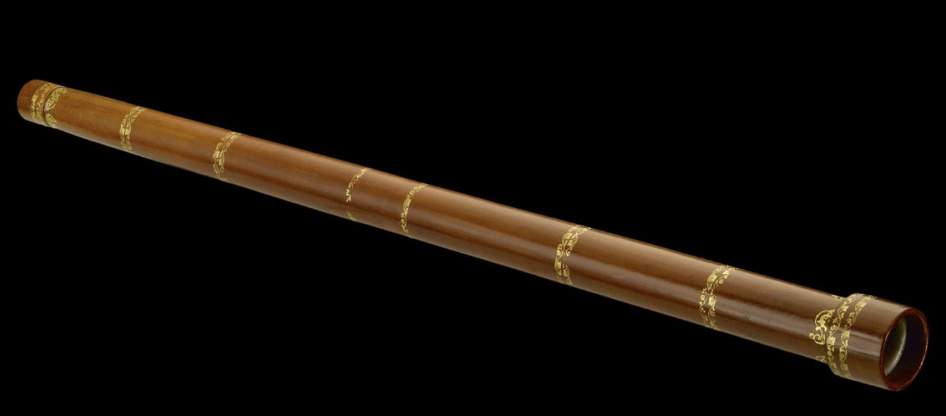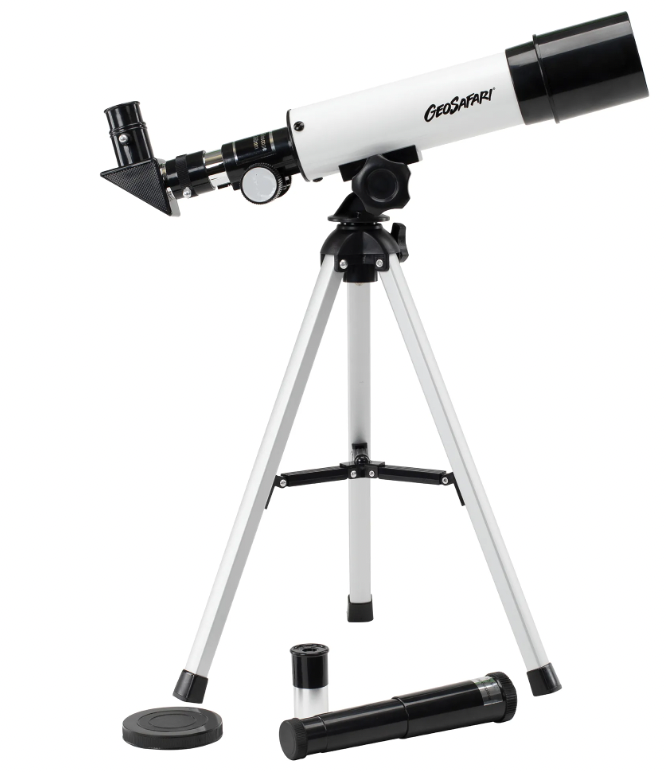Overview:
A telescope is a tool that people use to see faraway places and objects and has played an important role in advancing our understanding of our planets and the cosmos.

The first telescope was invented in 1608 by Hans Lippershey, a Dutch lensmaker, along with two other lensmakers, Zacharias Janssen and Jacob Metius, when they looked through the lenses they made and noticed how the object or place they saw was magnified 3 times. Galileo Galilei, an Italian astronomer/physicist, after hearing about the invention of Hans Lippershey, constructed and refined his version of the telescope, thus creating a telescope with a magnification of 30 times (Edward. R, (1951)).
Early telescopes were very difficult to make. The problem is the challenge of shaping the concavity of the lenses needed for the telescope. Even in modern times, a good lens can cost $200 or more. Furthermore, the early model lacks a more precise view and filter protection against light radiation when looking at the stars. Now in the present, many new models of the telescope, daily used by astronomers, continue to be developed and can cost around $300 to $8000, based on the OPT, the largest telescope retailer in the world (Ian. L, (2017)).
Telescopes used by astronomers are divided into 3 types: refractor, reflector, and catadioptric. The first telescope that Hans Lippershey made was considered a refractor, meaning a telescope that uses lenses to bend lights to focus. Then comes the reflector telescope, invented by Isaac Newton in 1668, which uses mirrors to bend light into focus, while catadioptric telescopes, developed in the 1930s, use both lenses and mirrors.
Scientists who study astronomy or people interested in seeing the stars would like to have a telescope, for its sole purpose is to observe the stars. A telescope works by capturing and magnifying the light that is being transmitted by the star into our eyes. Some powerful telescopes can capture an image of a star that is billions of light years away and is extremely big. These sizes of telescopes are often used by astronomers when looking into deep space. Without the telescope, scientists who study astronomy would be unable to see and observe the world outside our planet from the comfort of our homes.
General Appearance:
Notes: The sizes of every telescope are relative to the aperture, a space through which light passes in the telescope.
Refractor Telescopes:
A refractor telescope has a long optical tube with a minimum aperture of 2.4 inches in diameter. The overall shape is like a stretched cone, with the bigger end facing toward the sky and the smaller end facing the ground. Most refracting telescopes consist of having two lenses: one lens at the front, which is the objective lens that focuses an image, and one at the back, which is the eyepiece that makes the view come into view and magnified. The objective lens is relatively larger than the eyepiece, for it captures and focuses the light. The largest refractor telescope built so far was the “Great Refractor Telescope” in Yerkes Observatory, which is 64-foot barrel long and weighs 6 tons (Grainger, (2023)).


Reflector Telescopes:
Reflector telescopes, like the refractor telescope, have a long optical tube, but the shape is more cylindrical and has a minimum aperture of 4 inches in diameter. The telescope has one end of the tube open to let the light in, and the other end holds the parabolic primary mirror; there’s also a small hyperbolic secondary mirror in the middle of the tube (close to the opening) with a rear eyepiece attached to the side of the telescope; adjacent to the secondary mirror. Lastly, depending on the choice of the buyers, there’s a small scope connecting to the reflector telescope, which is the finder scope.
Catadioptric Telescopes:
The appearance of a catadioptric telescope is similar to the reflector telescopes, in which the overall shape is cylindrical and has a minimum aperture size of 4 inches. However, the eyepieces for this telescope are located in the back like the refractor telescope, and the size is not as big as the refractor or the reflector telescope. Furthermore, since the catadioptric utilized both mirrors and objective lenses, the telescope optimized the advantage of both the refractor and reflector telescope. There are many variations of this design, including the common ones like Schmidt-Cassegrains and Maksutov-Cassegrains (Ian. L, (2017)).

Function/Purpose:
All three types of telescope share the same function of allowing people to observe the stars and places of great distance within the line of sight. However, the way each telescope brings the light into focus is different and has its advantages and disadvantages.
How Does Refractor Telescope Work:
As mentioned previously, the refractor telescope utilizes an objective lens and eyepieces to magnify the image. The reason why the telescope is shaped like a cone is because of how the objective lens focuses the light. The objective lens is a convex lens that will converge the light together as it moves straight when the light passes through. The principle is the same with how the magnifying glass focuses the sun’s rays to start a fire, but the distance it needs to travel for the light to be fully conjoined will vary depending on the diameter of the objective lens. The bigger the objective lens, the more light it can capture, but the longer the optical tube will have to be for the light to focus.

Advantage:
The advantage of a refractor telescope is that it is the most portable telescope used by astronomers and is best for observing distant stars. In addition, it doesn’t need much cleaning because the interior is perfectly enclosed. Only the outside of the telescope will need some cleaning.
Disadvantage:
The disadvantage of a refractor telescope is that depending on the type of lenses used, it may produce visible color fringing at high magnifications, also known as chromatic aberration color. Color fringing is like seeing two of the same images overlapping with each other as if it’s being layered. (Ian. L, (2017)) In addition, a refractor telescope is very expensive due to the difficulty of manufacturing high-quality lenses with great accuracy.

How Does Reflector Telescope Work:
The reflector telescope is a mirror-based telescope that requires 2 types of mirrors to create a focus image: the parabolic mirror and the hyperbolic mirror. A parabolic mirror is also known as a concave mirror, while a hyperbolic mirror refers to a convex mirror. When the light comes into the optical tube, the parabolic mirror from the back will act similar to the objective lens in which the light will become focused as it is reflected up toward the small hyperbolic mirror. The small hyperbolic mirror will bend the light toward the eyepiece as the light continues to be conjoined.
Advantage:
The advantage of a reflector telescope is that it gathers more light to provide a clear image of the magnified object and produces no color fringing like the refractor telescope, making this telescope ideal for observing relatively distant objects but not too far like the moon. In addition, this telescope is more affordable since manufacturing and shaping the mirror is less difficult than shaping lenses.
Disadvantages:
The disadvantage of a reflector telescope is that the magnified image through this telescope, by default, will be upside down or inverse from the original image, given that this telescope utilizes mirrors to focus the light. For this reason, a finderscope is necessary to line up with the desired object or place before looking through the eyepieces. In addition, this telescope will also require daily cleaning and mirror adjustments, given that it is more susceptible to disruption like humidity, dust, etc, with the tube being open all the time, thus causing blurry images.
How Does Catadioptric Telescope Work:
As mentioned before, catadioptric telescopes utilize both mirrors and lenses to bring the light into focus and have a more complex design than the refractor and the reflector telescope. As the light enters through the optical tube of the telescope, the corrector plate, which is the lens at the front, will prevent disturbances like dust, humidity, etc, from entering the telescope and allow only light to pass through. Next, using the same principle with the reflector telescope, the light will be reflected from a parabolic mirror at the back of the scope, which will focus the light toward the front, where it is reflected again by a smaller hyperbolic mirror towards the eyepiece as the light becomes to focus.

Advantage:
The advantage of the catadioptric telescope is that because of its design of bending light into focus, the overall size is portable and lightweight for beginner astronomers. In addition, like the reflector telescope, it has a great light-gathering capability without having to worry about many obstructions. (Ian. L, (2017))
Disadvantage:
The disadvantage of the catadioptric telescope is that, like the reflector telescope, it will require some mirror adjustment, but not frequently, roughly once per year if taken care of well. (Ian. L, (2017))
Components that All Telescope Shares:
- Optical tube: is the body of the telescope and serves to keep extraneous light and disruption from entering in other directions that will affect the magnified image.
- Eyepiece: this part is located where you observe the distant view through the telescope. If an objective lens serves to bring the light into focus then the eyepiece is the opposite in which the eyepiece’s role is to bring the focus light to view by magnifying the light.
- Focusor: is the part located beside the eyepiece and is what adjusts the magnification of the light, to present an optimal perception of the image for each viewer.
- Mount: connects the telescope to the Tripod and is also what stabilizes the telescope from shaking
- Tripod: is the stand that lifts and holds the telescope to where your head and eye level are.

Citation:
- Leo. C, (2024) Refractor VS Reflector Telescopes Pros and Cons Explained, Ryda. https://www.ryda.com.au/blog/refractor-vs-reflector-telescopes/
- Martin. H, (2009), How do telescopes work?, Multiwavelength Astronomy. https://ecuip.lib.uchicago.edu/multiwavelength-astronomy/optical/history/04.html
- Edward. R, (1951), Galileo and the telescope, The Library of Congress. (n.d.). https://www.loc.gov/collections/finding-our-place-in-the-cosmos-with-carl-sagan/articles-and-essays/modeling-the-cosmos/galileo-and-the-telescope#:~:text=While%20there%20is%20evidence%20that,Jacob%20Metius%20independently%20created%20telescopes
- Ian. L, (2017), The Basic Types of Telescopes, OPT. https://optcorp.com/blogs/telescopes-101/the-basic-telescope-types#:~:text=Most%20telescopes%20will%20fall%20into,of%20both%20lenses%20and%20mirrors
- Grainger Editorial Staff, (2023), Yerkes Observatory: Restoring World’s largest Refracting Telescope, Grainger. https://www.grainger.com/know-how/inspiration/kh-video-yerkes-observatory#:~:text=Built%20by%20the%20University%20of,Sagan%20worked%20and%20studied%20there.



Recent Comments